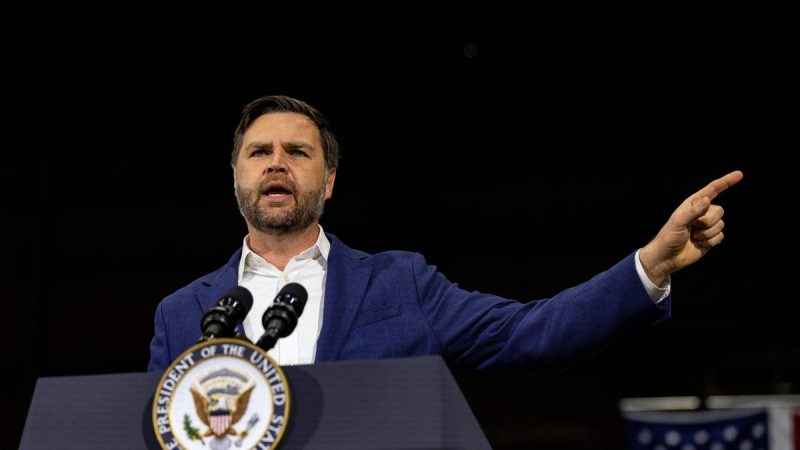Canada’s economy contracted at a sharper pace than forecasted in the second quarter as exports pulled back in the face of US tariffs, Statistics Canada said on Friday.
The economy shrank by 1.6% on an annualised basis in the three months to June 30 after growth of 2.0% in the first quarter, albeit revised downwards.
This dismal showing brought first-half annualised growth for the year barely above zero at just 0.4%.
Its second-quarter pullback was the country’s first quarter of contraction in seven quarters, and highlighted a sudden loss of momentum. Analysts surveyed by Reuters had projected a lesser decline of 0.6%.
Weak exports and investment are weighing on growth
Exports were the most significant drag on the economy, falling 7.5% in the quarter, the largest drop in five years.
The decline in trade flows, exacerbated by US tariffs, overshadowed increases elsewhere in the economy.
Business investment exhibited symptoms of stress. Spending on machinery and equipment declined 0.6%, the first decrease since the outbreak.
The drop in exports and investment underscored Canada’s vulnerability to external shocks and global trade conditions.
Domestic demand cushions the blow
Despite external difficulties, domestic demand served as a buffer. Household final consumption expenditure increased 4.5% on an annualised basis, owing to strong consumer activity.
Residential investment rose 6.3%, while government final consumption spending increased 5.1%.
Overall, domestic demand increased by 3.5%, indicating that household and public sector expenditure remained strong despite a weak trade sector.
Monthly GDP highlights persistent weakness
Gross domestic product fell 0.1% in June, Statistics Canada also said Thursday, following drops in April and May.
The monthly decline was led by output in goods-producing sectors, which make up a quarter of Canada’s economy.
It represented the third straight month of contraction, the first time in three years that the economy has contracted three months in a row. June GDP was expected to grow 0.1%, according to analysts.
In July, an advance estimate indicated that the economy might have grown by 0.1%, signalling it could be on a path to a slight recovery in the third quarter.
Market reaction and rate-cut expectations rise
The disappointing GDP data added to expectations that the Bank of Canada (BoC) may be forced to ease its monetary policy. The key interest rate of the central bank has remained unchanged at 2.75% for the last three meetings.
The amount of Bank of Canada (BoC) rate cut priced in at the central bank’s September 17 meeting increased to 48% from 40% before the GDP release.
Financial markets responded immediately. The Canadian dollar fell 0.17% to 1.3771 per US dollar, or 72.62 US cents.
The two-year government bond yields decreased 2.8 basis points to 2.664% amid rising expectations for monetary policy easing.
Outlook: Cautious optimism amid uncertainty
While the second-quarter contraction was a significant setback, the durability of domestic demand and early signs of revival in July indicate that the economy may avoid a prolonged downturn.
Nonetheless, with exports under pressure and business investment slowing, Canada’s growth outlook remains uncertain.
The Bank of Canada confronts a difficult policy decision in September, balancing inflation risks against apparent indicators of a slowing economy.
The post Canada’s economy shrinks more than expected in Q2 as exports slump appeared first on Invezz








![Lawmakers on both sides of the aisle panned the White House’s move to cancel billions in foreign aid funding as illegal, and warned that it could have dire consequences on the fast-approaching deadline to fund the government.
The White House on Thursday notified Congress of the administration’s intent to cancel $4.9 billion in foreign aid funding through a ‘pocket rescission.’
‘Last night, President Trump CANCELED $4.9 billion in America Last foreign aid using a pocket rescission,’ the Office of Management and Budget (OMB) said on X. ‘[President Donald Trump] will always put AMERICA FIRST!’
The pocket rescissions package obtained by Fox News Digital includes cuts to a variety of foreign aid programs over several fiscal years that the administration argued did not comport with Trump’s agenda.
Included are roughly $520 million in cuts to Contributions to International Organizations account, over $390 million in cuts to the Contributions for International Peacekeeping Activities account, $322 million from the Democracy Fund, $445 million from the Peacekeeping Operations account and over $3 billion from Development Assistance.
The rescissions process allows the president to make a request to Congress to cancel already approved funding within a 45-day period. Lawmakers successfully went through that exercise earlier this year when they approved $9 billion to be slashed from public broadcasting and foreign aid.
However, a pocket rescission is designed to skirt that 45-day window by coming so close to the end of a fiscal year that lawmakers wouldn’t have time to weigh in. And the White House’s maneuver is already giving Senate Republicans and Democrats heartburn.
Senate Appropriations Chair Susan Collins, R-Maine, said in a statement that the move was an ‘apparent attempt to rescind appropriated funds without congressional approval.’
She also argued that the Government Accountability Office found that under the Impoundment Control Act, the law that governs rescissions, this style of pocket rescission was illegal.
‘Any effort to rescind appropriated funds without congressional approval is a clear violation of the law,’ she said.
‘Instead of this attempt to undermine the law, the appropriate way is to identify ways to reduce excessive spending through the bipartisan, annual appropriations process,’ Collins continued. ‘Congress approves rescissions regularly as part of this process.’
Fox News Digital reached out to the OMB and the White House for comment but did not immediately hear back.
Lawmakers will also have to grapple with how the pocket rescissions will affect negotiations to keep the government open. Senate Minority Leader Chuck Schumer, D-N.Y., already warned that further attempts to claw back congressionally approved funding would be a bridge too far for Democrats.
Prior to the announcement, Schumer and House Minority Leader Hakeem Jeffries, D-N.Y., sent a letter to House Speaker Mike Johnson, R-La., and Senate Majority Leader John Thune, R-S.D., imploring both to meet with them to discuss the looming Sept. 30 deadline.
In the letter, they specifically asked if more rescissions were coming.
Now, Schumer charged that the ‘unlawful ‘pocket rescission’ package is further proof President Trump and Congressional Republicans are hellbent on rejecting bipartisanship and ‘going it alone’ this fall.’
‘As the country stares down next month’s government funding deadline on September 30th, it is clear neither President Trump nor Congressional Republicans have any plan to avoid a painful and entirely unnecessary shutdown,’ Schumer said in a statement.
‘In fact, it seems Republicans are eager to inflict further pain on the American people, raising their health care costs, compromising essential services and further damaging our national security,’ he continued.
This post appeared first on FOX NEWS White House move to cancel $4.9B foreign aid with ‘pocket rescission’ blasted as illegal](https://stockmarketspotlight.com/wp-content/uploads/2025/08/donald-trump-800x450-1.jpg)

![Gov. Greg Abbott, R-Texas, has signed a new congressional map into law, securing an additional five Republican-leaning U.S. House districts ahead of competitive midterm elections expected in 2026.
Abbott’s signature on Friday marks the culmination of a partisan redistricting debate that has captivated the country’s attention and inspired an eye-for-an-eye effort by California Democrats.
‘Today, I signed the One Big Beautiful Map into law,’ Abbott said on X. ‘This map ensures fairer representation in Congress. Texas will be more RED in Congress.’
The Republican-controlled Texas House and Senate passed the new map through their respective chambers last week, following weeks of Lone Star State Democrats breaking quorum and fleeing the state to avoid a redistricting vote.
And Republicans in the state were not shy about the reason why they wanted to tweak the map.
Sen. Phil King, R-Texas, who carried the map in the Senate, contended that while the map created more competitive districts, he believed they would be won by Republicans during the 2026 midterm election cycle.
‘[House Bill 4], I believe, should elect more Republicans to the U.S. Congress, but I’m here to tell you, there are no guarantees,’ he said.
Texas Democrats aren’t shy about their plans to challenge the map in court, either.
Texas Democratic Party Chair Kendall Scudder lauded state Democrats for their attempts to block the process and charged that Texas Republicans ‘have effectively surrendered Texas to Washington, D.C.’
‘This isn’t over — we’ll see these clowns in court,’ Scudder said. ‘We aren’t done fighting against these racially discriminatory maps, and fully expect the letter of the law to prevail over these sycophantic Republican politicians who think the rules don’t apply to them.’
Abbott pushed for the creation of a new map to adhere to President Donald Trump’s desire to not see a repeat of the 2018 election cycle, when Democrats handily regained the majority in the House and acted as a foil to the president’s legislative goals toward the end of his first term.
The Texas map seeks to maintain the Republican majority in the U.S. House next year. Republicans managed to pass Trump’s ‘big, beautiful bill’ through Congress this year, fulfilling many of his 2024 campaign promises, including immigration and green energy reform and tax cuts. Democrats are already using the megabill as fodder for their 2026 campaigns, particularly on Medicaid cuts.
Repeating a similar legislative achievement for Trump would face even more hurdles if Democrats win control of the House.
But Abbott and the Texas GOP’s effort could be in vain, given that California Gov. Gavin Newsom and California Democrats passed their own new map, which added five new Democratic-leaning seats in a bid to cancel out Trump’s demands.
However, the new California map is not yet official, and must be approved by voters in November to be enacted.
‘The People of California will be able to cast their vote for a Congressional map. Direct democracy that gives us a fighting chance to STOP Donald Trump’s election rigging,’ Newsom said on X.
While Republicans control a supermajority in deep-red Texas, Democrats were still needed to create a quorum in the House to actually move the process along.
Dozens of Texas Democrats fled the state to stall the process, creating a national media frenzy and generating support from Democratic donors, including groups linked to George Soros and Beto O’Rourke, to help pay for their fines, travel and lodging.
But Texas Republicans Attorney General Ken Paxton and House Speaker Dustin Burrows sought nationwide civil arrest warrants for the Texas House Democrats who broke quorum, and Sen. John Cornyn, R-Texas, requested the FBI track them down and the DOJ launch an investigation into the political action committees funding their escape.
Democratic leaders announced early last week they would return for the second special session following California’s plan to redraw its maps to soften the blow from the Lone Star State, ending the blockade and allowing Republicans to charge ahead.
Texas House Democrats accused the GOP of crafting a map that was illegal and racially discriminatory, and they tried and failed on the House floor to add amendments to the bill that would have halted the process. Despite Democrats’ best efforts, Texas House Republicans shot down a dozen amendments to the bill and passed it last Wednesday evening.
‘Members, it breaks my heart to see how this illegal and rigged mid-decade redistricting scheme is dividing our state and our country,’ Rep. Chris Turner, a Democrat, said. ‘This is Texas, it’s not Washington D.C. The impulses of outside politicians and their billionaire backers shouldn’t dictate what we do in this chamber, in this House.’
Rep. Todd Hunter, a Republican who wrote the bill for the new map, countered that four of the five new districts were ‘majority-minority Hispanic,’ noting that each of the new districts now trended Republican. Still, he had no qualms as to why Republicans were pursuing changes to the congressional maps.
‘The underlying goal of this plan is straightforward, [to] improve Republican political performance,’ he said.
The Democrats’ blockade ended last week, when Abbott called for a second special session after their demands for California to also begin a redistricting cycle were met in an effort to nullify the map Texas Republicans were creating.
This post appeared first on FOX NEWS Abbott signs Texas redistricting map into law, securing major GOP victory ahead of 2026 midterms](https://stockmarketspotlight.com/wp-content/uploads/2025/08/abbott-thumbs-up-800x450-1.png)